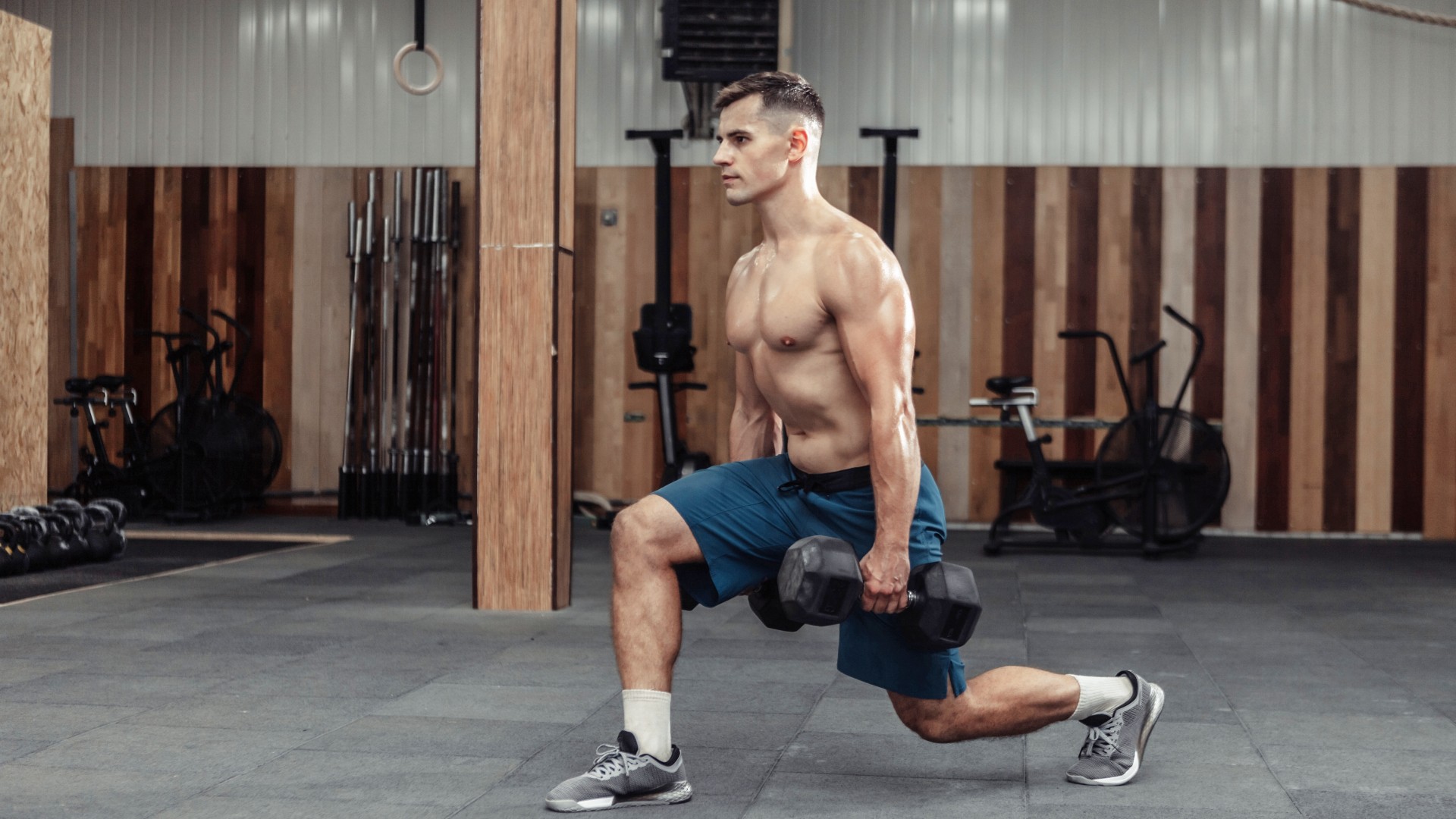
There are some tips I wish someone had shared with me before I started lifting weights, so now I’m sharing three of the best ones I’ve learned from coaching. These tips for growing muscle using dumbbells should help you maximize muscle growth whether you enjoy home workouts or prefer heading to your local gym.
I love dumbbell workouts and believe free weights offer much more versatility than gym machines when training your muscles toward hypertrophy (muscle growth).
Of course, there are times when only a barbell will suffice — Olympic lifting and training for your one rep max, for example. But otherwise? The best adjustable dumbbells (or any dumbbell, for that matter) can provide a fantastic upper or lower-body workout. And there are a few ways to give those muscles the proper pump they deserve.
Below, I cover why dumbbell training is worth its salt and three tips to maximize your time on the bells. Here they are.
3 tips for growing muscle using dumbbells
1. Move slower
Yep, I mean that.
The time under tension technique (TUT) should be your best friend, and it’s a really simple way to focus the tension on the target muscle groups through a full range of motion, working the muscles for longer and harder. In fact, I mention the technique when detailing the 5 ways to build muscle without lifting heavier weights. So when you see those gym bunnies pumping reps at super speed, don’t feel pressured to follow suit.
When programming for resistance training, coaches often use a four-digit tempo sequence. For example, we might use 4-1-4-1 for a push-up — that means the client lowers into the push-up for 4 seconds, pauses for a second and then pushes back up for the count of 4. Those numbers will be higher if your focus is TUT.
Sign up to get the BEST of Tom's Guide direct to your inbox.
Get instant access to breaking news, the hottest reviews, great deals and helpful tips.
During hypertrophy training, adopting a slower tempo between 35-60 seconds per set could help you adopt tempo training. Under fatigue, muscle fibers may undergo micro-tearing, which produces a growth hormone response.
Another way to adopt tempo training is to use a complex. During training like this 5-move barbell complex workout, you’ll combine a series of exercises without rest. Think of it like one giant working set. The technique helps you target multiple muscle groups, known as compound exercises, and work muscles for longer with less rest.
2. See eccentric loading as your friend
There are three phases of a muscular contraction — concentric, eccentric and isometric. The concentric phase involves the muscle shortening under contraction, eccentric means the muscle lengthens under contraction and isometric refers to no change in muscle length while under tension — like a plank.
It’s a common misconception that you’ll only build maximal strength and muscle by exerting the most force during the concentric phase. Training all three is necessary, and eccentric training is crucial for improving everyday activities like sitting or slowing down as you walk downhill and helping to improve your mobility and control.
To make the most of the eccentric phase of an exercise, spend longer on that portion of the move — lowering into a squat or push-up, for example. You can do this by adopting the time under tension technique above. Taking the push-up as an example, you could program the lowering phase for 4 seconds, then push upward for 1-2 seconds.
Some studies have found that eccentric loading could be more effective at building strength and increasing muscle mass. The training method has been used widely in the rehabilitation of athletes, too, by decreasing the load on the joints.
3. Put thought into calculating reps and weights
You won’t notice progressive results if you don’t have a plan. Sure, HIIT, CrossFit and other workout classes are brilliant ways to exercise and power some seriously impressive results. Still, you’ll need to gradually manipulate the weights you lift or calculate reps and sets properly to encourage muscles to grow.
We cover how to make decisions on sets, reps and weight ranges when training for strength vs hypertrophy. As a general rule of thumb for building muscle using a resistance training program, prioritize roughly 3-5 sets per exercise for 8-12 reps and at least 6 exercises per workout whether you’re programming for chest and back, arms and shoulders, legs or abs. Lift a set of dumbbells that allows you to work with good form so that the last few reps feel close to failure.
If you want to drill down on the details, calculate your one rep max (the most weight you can lift for one rep of an exercise), then use weights between 60-80% of that. Most gym-goers do this for the big lifts like bench presses, squats, or deadlifts. If you’re plateauing when trying to build bigger muscles, remember that you should feel challenged — if you’re coasting, you’re wasting your time.
Increasing the weight is only one overload method. Reps, tempo, sets and rest periods all matter and can help you add intensity and manipulate your training regime. Here’s a guide on high reps vs heavy weights to help you decide.
Benefits of dumbbell exercises

The barbells vs dumbbells debate wages on, but you can use them interchangeably during your workouts. I tend to program barbells for maximal weightlifting and strength components of CrossFit training — think snatches, deadlifts and power cleans, for example.
Dumbbells fill any functional fitness gap. They work well for resistance programs, HIIT workouts, endurance and cross training, or you can add light dumbbells to most Pilates or core sessions. Adjustable dumbbells save space and money if you don’t have access to a home gym, and as a whole, suit the average gym-goer’s lifestyle more than cumbersome machines or Olympic barbells.
But if someone puts the gym machines vs free weights choice to me, I’m picking free weights all day, every day. That includes kettlebells, dumbbells and barbells. Free weights allow you to move more naturally, building functional strength and power by replicating daily movement patterns like pushing and pulling and forcing muscles to work harder to build stability.
The results include a better range of motion, stronger muscles and bones, better control over your weights and increased coordination, balance and core stability. You name it, free weights can handle it. You can also access a far greater library of exercises using them, including single-sided (unilateral) moves that force two sides of the body to recruit together and improve mind-muscle connection.
What’s not to love?
More from Tom's Guide

Sam Hopes is a level 3 qualified trainer, level 2 reiki practitioner and senior fitness writer at Tom's Guide. She is also currently undertaking her Yoga For Athletes training course. Sam has written for various fitness brands and websites over the years and has experience across brands at Future such as Live Science, Fit&Well, Coach, and T3.
Having worked with fitness studios like F45 and Virgin Active, Sam now primarily teaches outdoor bootcamps, bodyweight, calisthenics and kettlebells. She also coaches mobility and stretching-focused classes several times a week and believes that true strength comes from a holistic approach to training your body.
Sam has completed two mixed doubles Hyrox competitions in London and the Netherlands and finished her first doubles attempt in 1:11.
